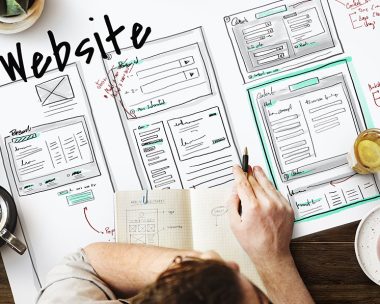Pay-Per-Click AI and the Future of Keyword Research for Google Ads

In the fast-paced world of digital advertising, effective keyword research is the cornerstone of a successful Google Search Ads campaign. Traditionally, this process was a manual, time-consuming task that relied heavily on human intuition and basic data analysis.1 However, the integration of Artificial Intelligence (AI) has completely revolutionized this practice, making it more efficient, comprehensive, and strategic.2 AI-powered tools now allow marketers to uncover hidden opportunities, streamline campaign creation, and ultimately achieve a higher return on ad spend.
The core benefit of using AI for keyword research is its ability to process vast datasets at speeds impossible for humans.3 Instead of simply generating a list of keywords, AI tools can analyze semantic relationships and user intent, helping you discover long-tail keywords and related topics you might never have found manually.4 This deeper understanding of what users are actually searching for allows for the creation of more targeted and relevant ad groups, which is a key factor in improving Google Ads’ Quality Score and reducing cost-per-click.
AI also excels at keyword clustering and grouping.5 It can take a large list of keywords and automatically sort them into logical, tightly-themed ad groups.6 This is a crucial step for building a high-quality Google Ads campaign structure. A well-clustered campaign ensures that your ad copy is highly relevant to the keywords in each group, leading to higher click-through rates (CTR) and better conversion rates. Furthermore, AI tools can help with predictive analysis, forecasting which keywords are likely to perform best based on historical data and market trends.
Beyond just finding keywords, AI can assist with competitive analysis.7 It can crawl competitors’ ads to identify their keyword strategies, ad copy, and landing pages. This intelligence provides a significant advantage, helping you identify gaps in their strategy and build campaigns that outperform theirs. However, it’s important to remember that AI is a powerful assistant, not a replacement for human expertise.8 A successful strategy still requires a marketer to provide strategic direction, interpret the data, and add a layer of brand-specific nuance that AI alone cannot provide. By combining human strategy with AI’s data processing capabilities, advertisers can build more powerful, cost-effective, and successful Google Ads campaigns.
1. How does AI clustering directly improve Google Ads Quality Score?
AI clustering groups keywords into very specific, tightly-themed ad groups. This ensures that the ad copy you write for that group is highly relevant to every keyword within it. Since Quality Score is heavily influenced by ad relevance and expected CTR, this tight-knit structure directly leads to a higher Quality Score, which in turn reduces your cost per click.
2. How does AI assist in identifying and researching negative keywords?
AI is highly effective for negative keyword research. It can analyze the context of search queries that your ads appear for and identify irrelevant terms that are wasting your budget.9 For example, if you sell “black shoes” and your ads are showing for “how to polish black shoes,” an AI can automatically suggest adding “how to” as a negative keyword.
3. What are the core differences between AI-powered tools and Google’s native Keyword Planner?
Google’s Keyword Planner is excellent for basic research and volume data. However, AI-powered tools go further by analyzing search intent, grouping keywords semantically, and providing competitive intelligence.10 They offer a more holistic view of the market and help build a campaign structure, whereas the Keyword Planner primarily provides data for manual analysis.
4. How do I use AI to predict and optimize for a keyword’s seasonality?
Yes, many AI tools can analyze historical search data and identify seasonal trends and patterns. By forecasting when a keyword’s search volume is likely to peak or drop, you can adjust your budgets and bids accordingly, ensuring you are spending more during high-demand periods and pulling back during off-seasons.
5. What is the process of combining first-party data with AI for enhanced keyword research?
You can upload your own customer data (e.g., from your CRM) into some AI tools. The AI can then analyze this data to find common keywords and search behaviors among your most valuable customers, helping you to build hyper-targeted campaigns that attract a similar audience.11
6. What is the role of AI in effectively managing broad match keywords?
AI is crucial for using broad match effectively. Broad match keywords rely on Google’s own AI to determine user intent. By using a strong negative keyword list and providing a high-quality ad group structure (developed with AI), you can guide Google’s system to a more relevant audience while still leveraging the reach of broad match.
7. How does AI help in uncovering the user intent behind a keyword?
AI uses Natural Language Processing (NLP) to understand the context and purpose behind a search query.12 It can differentiate between informational queries (“what is a VPN”) and transactional queries (“buy VPN service”), allowing you to group keywords by intent and tailor your ad copy to match the user’s stage in the buying journey.13
8. What is the impact of an AI approach on long-tail versus short-tail keywords?
AI is particularly effective at uncovering a massive volume of long-tail keywords.14 While short-tail keywords have higher search volume, long-tail keywords often have higher conversion rates because they are more specific.15 AI’s ability to find and cluster these long-tail gems makes it an invaluable tool for building a more efficient and profitable campaign.
9. What are the ethical considerations and best practices when using AI for competitor analysis?
When using AI to analyze competitors, the ethical line is drawn at proprietary data. While it’s generally accepted to analyze publicly available information (like ad copy and landing pages), it’s unethical to use AI to access or exploit non-public data. Focus on using AI to understand market dynamics, not to steal or misuse private information.
10. What is the process of using AI to optimize and refine existing keyword lists?
You can upload your existing keyword list into an AI tool. The AI can then analyze its performance, suggest new keywords you’re missing, identify keywords with low Quality Scores, and help you restructure your ad groups for better performance. This is a great way to improve an underperforming campaign without starting from scratch.


